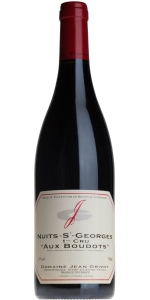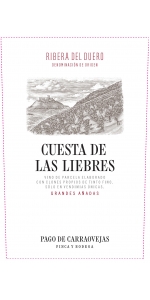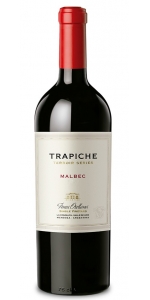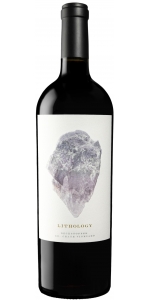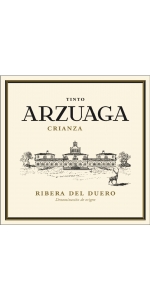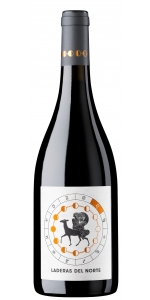Arzuaga Gran Arzuaga Ribera del Duero 2018
3 bottles with free shipping for: $540.00
6 bottles with free shipping for: $1,062.00
12 bottles with free shipping for: $2,100.00
| BUY MORE! SAVE MORE! | ||||||||||||||||||||
|
| Country: | Spain |
| Region: | Ribera del Duero |
| Winery: | Arzuaga |
| Grape Type: | Tempranillo |
| Vintage: | 2018 |
| Bottle Size: | 750 ml |
Arzuaga Gran Arzuaga Ribera del Duero is made from 92% Tinto Fino (Tempranillo) and 8% Cabernet Sauvignon.
Gran Arzuaga is a special cuvee coming from the selection of vineyards on the two banks of the Duero River. Tempranillo is planted in the Olivares de Duero area and Cabernet Sauvignon in La Planta estate that rich in limestone soils. Both areas bring richness and typical characters to the wine.
Tasting notes:
The wine has a bright cherry red color with violet rims. On the nose, it shows great aromatic complexity. In the first place, the primary aromas of red fruits such as blackberry predominate, herbaceous and floral touches that give way to tertiary aromas where balsamic and spicy aromas stand out. On the palate the wine is creamy and silky, with a fresh entry that quickly becomes meaty and unctuous as it goes through the mouth.
Perfect with Roast Lamb, Meat Stews, and even dark Chocolate.
Review:
"This wine's aromas of black cherry, caramel and violet pave the way for dark berry, clove, menthol, orange zest and rose-petal flavors. Polished tannins and a nice sense of brightness fill the mouth and recede into a finish marked with chocolate and orange zest. Drink through 2043. - Mike DeSimone"
- Wine Enthusiast (July 1st 2023), 97 pts & Cellar Selection
Florentino Arzuaga, a great wine lover, founded Bodegas Arzuaga-Navarro in the early 1990’s after purchasing Finca La Planta, an estate located in the town of Quintanilla de Onésimo (Valladolid). With pines, oaks, Spanish cedars, wild boars, and deer, Florentino realized the great potential of an estate large enough to have a horizon of its own. Then came the vines, the cellar, and the wine – red wines with a backbone, yet elegant, well-rounded, and complex.
Bodegas Arzuaga-Navarro boasts over 150 hectares of vineyards distributed between the immediate vicinity of the cellar and the natural area of La Planta estate. The Arzuaga-Navarro vineyards enjoy a unique climate: during the day, a sharp sunlight bathes the land, while nights are fresh and humid. This combination of climatic factors favors a slow and perfect grape ripeness, resulting in a lush, aromatic fruit with great acidity.
In the Castilian region, characterized by having scarcely fertile soils, the Tinto Fino (or Tempranillo) varieties, as well as the French varieties Cabernet Sauvignon and Merlot are cultivated. For over 20 years, 80 percent of the vineyards have yielded around 4.00 kg/ha.
Bodegas Arzuaga-Navarro also owns vineyards outside the province of Valladolid, in the town of Malagón, in Ciudad Real, where the Pago Florentino wine is produced.
The Bodega’s passionate work has turned their wines into one of the most prestigious brands within the Ribera del Duero Denomination of Origin.
Domaine Jean Grivot Nuits-Saint-Georges Premier Cru Aux Boudots is made from 100 percent Pinot Noir.
Domaine Jean Grivot is among the great names in Burgundian wine. Étienne Grivot and his wife Marielle took over from Étienne’s father Jean Grivot in 1987. The vineyards are densely planted and farmed organically “sans certification” while the aim in the cellar is for balance and clear expression of terroir.
Jean Grivot’s 38.3 acres spread across 22 appellations with vineyards in the communes of Vosne-Romanée, Vougeot, Chambolle-Musigny, and Nuits-Saint-Georges. Besides the three grand crus, there are 8 premier crus including the much lauded Les Beaux Monts and Suchots in Vosne-Romanée. The grapes are completely de-stemmed and fermentation is spontaneous.
Nuits-Saint-Georges Aux Boudots 1er cru lies in the “Zone Vosnoise” or northern end of Nuits-Saint-Georges just below Les Damodes. It borders Vosne-Romanée Aux Malconsorts 1er just to its north. Its position slightly lower on the slope with deep soil full of pebbles results in a richer and fuller wine.
The grapes are destemmed and maceration à froid usually lasts just a day or two. The alcoholic fermentation is spontaneous and malolactic fermentation occurs in barrel. Depending on the vintage, the proportion of new oak is around 30-60% for the premier crus.
The wine shows aromas and flavors of red berries, herbs, and purple flowers. The palate is rich with ripe fruit and medium weight with bright acidity and fine tannins. Aging in 30-60% new Burgundian pièce brings notes of vanilla, toast, and baking spices.
Red Burgundy might be the world’s most flexible food wine. The wine’s high acidity, medium body, medium alcohol, and low tannins make it very food-friendly. Red Burgundy, with its earthy and sometimes gamey character, is a classic partner to roasted game birds, grilled duck breast, and dishes that feature mushrooms, black truffles, or are rich in umami.
Reviews:
‘The 2020 Nuits Saint-Georges Aux Boudots Ter Cru has the best aromatics among Grivat Nuits Saint-Georges with very well defined red berry fruit, briary and lignt sous-bois aromas. The palate is medium-badied with fine-grain tannins, slightly savory on the entry, fresh and saline on the finish. This has real verve and class, though it will benefit from time in bottle
-Vinous 93-95 Points
A wine with the substance and structure to support the generous lashings of new oak used for maturation, and the overall effect is elegant and classic in style. Aux Boudots, where Grivot has 0.85ha, is at the northern edge of Nuits, just over the border from Vosne-Romanée Malconsorts. They began to pick on the 3rd of September – Etienne specified that they are very particular that the tannins are ripe and do what they can to prolong the vegetative cycle. Still, the grapes were picked with an entirely correct pH of around 3.4.
-Decanter 94 Points
This is a 6 pack with 2 bottles each from vintages from 2013, 2015, and 2016.
***Tenimenti Angelini Val di Suga Vigna Spuntali Brunello di Montalcino 2016:
The 2016 Vigna Spuntali Brunello di Montalcino is the most brooding of the lineup from Val di Suga and is sourced from the southwest of the region on sandy soils. There are aromatics of black raspberry, licorice, menthol, sage, cinnamon, and iron-rich earth. Its Mediterranean influence is felt on the palate with ripe black cherry, dried herbs, and sun-baked earth. This is the fullest bodied and most savory of the Val di Suga lineup, with more roundness and grip. Its structure will benefit from cellaring for several years and will be great drinking over the next 20 years or more. 2026-2040.
-Jeb Dunnuck 96 Points
***Tenimenti Angelini Val di Suga Vigna Spuntali Brunello di Montalcino 2015:
The 2015 Vigna Spuntali Brunello di Montalcino is more introverted on first opening, with notes of black plum, licorice, dried Mediterranean herb, and sun-baked earth. On the palate, it offers a tart dried fruit character, with a building tannin structure that finishes with tomato leaf, and bitter herbs. The most rustic and burly of the wines in the lineup of the 2015 Val di Suga vintage, it will benefit from allowing some time in cellar to see how this matures and its tarriness develops. Drink 2026-2036
-Jeb Dunnuck 94 Points
***Tenimenti Angelini Val di Suga Vigna Spuntali Brunello di Montalcino 2013:
Plenty of spices and fresh herbs on the nose, such as dried rosemary and nutmeg, to match the underlying dried redcurrants and cranberries. Full-bodied with plenty of concentration, but still shows a very sturdy, tannin backbone and punchy acidity, to drive this through to a long finish. Drink in 2021.
-James Suckling 94 Points
Pago de Carraovejas Cuesta Liebres is made from 100% Tinto Fino. The plot is located on a terraced hillside located at 900 m above sea level with slopes that range between inclines of 30% and 40%. Red cherry color with purple hues. Ripe fruit aromas, vanilla notes. Suave and unctuous in the mouth. A strong and noble character.
The harvest is carried out by hand using small crates and after passing through a refrigerated container it is transferred into tanks via gravity. The alcoholic and malolatic fermentation is carried out in small French “Haute Futaie” Oak casks with unique and original local yeasts and fermenting bacteria from the vineyard itself, to bring out the very best of the terroir, respecting the uniqueness of each and every vintage. Clarified with egg whites and bottled by gravity with natural cork stoppers.
Pago de Carraovejas Cuesta de las Liebres 2019 is a red wine that masterfully blends finesse with a robust flavor profile. Upon olfaction, it unveils a complex array of nuances, with blueberries and blackberries taking center stage, complemented by undertones of sweet spices and hints of graphite and chocolate. On the palate, it is rich and full-bodied. This red wine boasts silky tannins, an extensive and enduring finish, and the exquisite signature of an outstanding vintage.
Trapiche Terroir Series Finca Orellana is made from 100 percent Malbec.
The history of Trapiche begins in 1883, in a small vineyard called El Trapiche, in the district of Godoy Cruz, Mendoza, where the grapes for the first fine wines were grown. With more than 130 years of experience, Trapiche has earned its place as a pioneering brand in the introduction of French vines, the production of varietal wines, the import of French oak barrels and the use of stainless steel tanks. True to its origins, today Trapiche is in a continuous quest for the latest best practices .Led by Daniel Pi, Director of Winemaking, Trapiche's winemaking team permanently strives to improve winemaking practices by exchanging experience and knowledge with winemakers from other wine producing countries such as France, the US, Australia and New Zealand.
With a deep garnet red color, this Malbec expresses aromas of red fruits such as cherries and currants, and intense balsamic notes with hints of fresh herbs. In the mouth, it is sweet and broad with a great concentration of fruit and soft, ripe tannins. It has a long, persistent and elegant finish.
Review:
El Peral may not be on the radar of many Argentine Malbec lovers. But if you take a look at Descorchados, you will realize that here we are fans of this area, a place of gentle hills, streams and trees. This vineyard was planted in 1946, and today it delivers deliciously liquefied fruit, with hints of cherries and cassis, but above all violets and blackberries in a long and deep body. Give it at least ten years in the bottle.
-Patricio Tapia - Descorchados 95 Points
-Tim Atkin 95 Points
Intense ruby color of high layer with garnet edge, clean and shiny. Intense nose that, from the beginning, transmits complexity, penetrating, with aromas of black fruits, blueberries and currants, undergrowth, roasted memories, toffee, coffee powder, liquorice, cloves, vanilla and lebanese cedar. Mouth with freshness and balance, with tannins ripe and creamy, which highlight its elegance, with a step harmonious and intense. Long and pleasant aftertaste, with a great variety of balsamic and spicy memories.
Review:
The old-vine component of the El Otero parcel, running to around seven hectares, supplies the fruit for this ageworthy Tinto Fino. After a frost-induced break in 2017, it's back with interest in 2018. Aged in new French oak, but not dominated by the wood, it's a finely judged red from Julio Sáenz with notes of blackberry and tangerine, filigree tannins and a long, textured finish. 2023-33
-Tim Atkin 96 Points
-
Alejandro Bulgheroni Lithology Beckstoffer Dr. Crane Vineyard Cabernet Sauvignon 99% Cabernet Sauvignon, 1% Cabernet Franc.
Here the Cabernet comes to us typically flawless, and the wines are as such. There is blue fruit, blueberries, black plums, blackberries, and cassis to the aromas, as well as stones, mineral, chocolate, fresh tobacco, and subtle herbs. It is incredibly full-bodied, but at the same time effortlessly drinkable, with ultra-smooth tannins and a positive, long, upturned finish. 70-75% new French oak is the norm for us with Dr. Crane, and those flavors are absorbed to become a vanillin complexity, sweetness, and length. An unbelievable wine.
Review:
You don’t see many Cabernet Franc-dominated wines from this site, but the 2019 Cabernet Franc Lithology Beckstoffer Dr. Crane Vineyard is certainly impressive. Offering more herbal, chocolate, gravelly earth, and espresso aromas and flavors, it has full-bodied richness and, as expected, is a powerful, opulent expression of this noble variety. The blend is 83% Cabernet Franc and 17% Cabernet Sauvignon, aged 20 months in 80% new French oak. It will benefit from short-term bottle age and drink nicely for 20 years.
-Jeb Dunnuck 97 Points
Arzuaga Ribera del Duero Crianza 95% Tempranillo and 5% Cabernet Sauvignon.
Dark cherry color with purple highlights. Powerful nose and high aromatic diversity of ripe red and black fruits, spicy and balsamic notes, and a roasted finish. Soft and mellow in the mouth with a great fruitiness and length.
Review:
This is a big wine with alluring aromas of cedary oak and black fruit. Ripe palate of black berries, some dark chocolate and integrated, polished oak. Long spicy finish. Classy Ribera. -Decanter 95 Points
Arzuaga Ribera del Duero Crianza 95% Tempranillo and 5% Cabernet Sauvignon.
Dark cherry color with purple highlights. Powerful nose and high aromatic diversity of ripe red and black fruits, spicy and balsamic notes, and a roasted finish. Soft and mellow in the mouth with a great fruitiness and length.
Arzuaga Ribera del Duero Crianza 95% Tempranillo and 5% Cabernet Sauvignon.
Dark cherry color with purple highlights. Powerful nose and high aromatic diversity of ripe red and black fruits, spicy and balsamic notes, and a roasted finish. Soft and mellow in the mouth with a great fruitiness and length.
THIS OFFER IS FOR HALF-BOTTLES
Arzuaga Ribera del Duero Crianza 95% Tempranillo and 5% Cabernet Sauvignon.
Dark cherry color with purple highlights. Powerful nose and high aromatic diversity of ripe red and black fruits, spicy and balsamic notes, and a roasted finish. Soft and mellow in the mouth with a great fruitiness and length.
Arzuaga Ladera del Norte Ribera del Duero is made from 100% Tempranillo.
The grapes come from organic crops and are harvested from the "Valdesardon" farm, owned by the Arzuaga Navarro family, which is the westernmost vineyard of the Ribera del Duero DO, located at an altitude of 800 meters in the village of Olivares de Duero. Clay-limestone soil on a hillside that will mark the characteristics of the wine.
The wine is of medium high intensity in color, a clear and bright cherry with purple flashes. An array of red fruits such as raspberry and cherry predominates with a high aromatic intensity, combining with balsamic tones, coffee and roasted notes coming from the aging in oak barrels without being overwhelming. This is a fresh and elegant wine, with an easy and balanced entry into the mouth followed by juicy and chewy sensations. Slightly sweet and toasted notes, and a pleasant and balanced aftertaste that is reminiscent of the fruity aromas on the nose.
Ideal companion for red meat, white meat, game and game, roasted or in sauce. Blue fish and soft cheeses.
Review:
"Intense cherry color. Aromas of dried herbs, creamy oak, black fruits and lactic notes. In the mouth, ripe fruits, spices, fine tannins, full-bodied."
- Penin 2022, 92 pts
Arzuaga Ribera del Duero Reserva is made from 95% Tempranillo, 4% Cabernet Sauvignon and 1% Merlot.
Clean and bright ruby red with purple reflections. Great aromatic intensity, complex and elegant, where the compote of red fruits dominates. The palate is structured with silky, sweet tannins and a lingering finish.
The harvest was done manually at the optimum point of maturity, and carried out separately for each of the more than 20 different plots used to make this wine. After the selection tables, a pre-fermentation maceration at low temperature and subsequent alcoholic fermentation at 28º is carried out, giving way to malolactic fermentation and aging in new French oak barrels for 26 months.
Ideal with red meats (big game), roasted white meat, and blue cheese.
- back
Weingut Prager Achleiten Riesling Smaragd is made from 100 percent Riesling.
Franz Prager, co-founder of the Vinea Wachau, had already earned a reputation for his wines when Toni Bodenstein married into the family. Bodenstein’s passion for biodiversity and old terraces, coupled with brilliant winemaking, places Prager in the highest echelon of Austrian producers.
Smaragd is a designation of ripeness for dry wines used exclusively by members of the Vinea Wachau. The wines must have a minimum alcohol of 12.5%. The grapes are hand-harvested, typically in October and November, and are sent directly to press where they spontaneously ferment in stainless-steel tanks.
Achleiten sits east of Weißenkirchen and is one of the most famous vineyards in the Wachau. The steeply-terraced vineyard existed in Roman times. Some sections have just 40 cm of topsoil over the bedrock of Gföler Gneiss, amphibolitic stone, and slate. “Destroyed soil,” as Toni Bodenstein likes to say.
Tasting Notes:
Austrian Riesling is often defined by elevated levels of dry extract thanks to a lengthy ripening period and freshness due to dramatic temperature swings between day and night. Wines from Achleiten’s highly complex soils are famously marked by a mineral note of flint or gun smoke, are intensely flavored, and reliably long-lived.
Food Pairing:
Riesling’s high acidity makes it one of the most versatile wines at the table. Riesling can be used to cut the fattiness of foods such as pork or sausages and can tame some saltiness. Conversely, it can highlight foods such as fish or vegetables in the same way a squeeze of lemon or a vinaigrette might.
Review:
The 2020 Ried Achleiten Riesling Smaragd offers a well-concentrated, fleshy and spicy stone fruit aroma with crunchy and flinty notes. It needs some time to get rid of the stewed fruit flavors, though. Full-bodied, fresh and crystalline, this is an elegant, complex and finely tannic Riesling that needs some years rather than a carafe to polymerize the tannins and gain some finesse. Tasted at the domain in June 2021.
At Prager, I could not determine that 2020 would be inferior to the 2019 vintage; on the contrary, the 2020 Smaragd wines fascinated me enormously in their clear, cool, terroir-tinged way. A 38% loss had occurred mainly because of the hail on August 22, although predominantly in the Federspiel or Riesling vineyards. There was no damage in the top vineyards such as Ried Klaus, Achleiten or Zwerithaler. "Interestingly, the vines are in agony for about two weeks after the hail. There was no more growth, no development of ripeness and sugar," reports Toni Bondenstein. The Veltliner then recovered earlier, while even picking a Riesling Federspiel in October was still a struggle. "Why Riesling reacted more intensively to the hail, I don't know myself either," says Bodenstein. Whole clusters were pressed to preserve acidity and to compensate for the lower extract, and compared to 2019, the 2020s were left on their lees longer. In June, however, the 20s in particular showed outstanding early shape.
-Wine Advocate 94 Points
Light yellow-green, silver reflections. Yellow stone fruit nuances with a mineral underlay, notes of peach and mango, a hint of tangerine zest, mineral touch. Juicy, elegant, white fruit, acidity structure rich in finesse, lemony-salty finish, sure aging potential.
-Falstaff 95 Points
Sokol Blosser 'Orchard Block' Pinot Noir 2021 is made from 100 percent Pinot Noir.
VINTAGE HIGHLIGHTS
2021 was the 2nd warmest growing season we have ever seen since 2015. We also got to add a new term to the dictionary: "Heat Dome". Three straight days of triple digit temperatures in late June breaking heat records for the Willamette Valley. Bud break started like usual in the middle of April. We had the driest March through May that the Willamette Valley has seen through 128 years of record keeping! Bloom also appeared on time in early/mid June. While late June brought the “Heat Dome”, our grapes made it through thanks to bloom being finished at all our sites and there still being soil moisture, so they grew like crazy over those three days of hellish temperatures. While July and August turned out to be exceedingly hot and dry, September arrived with little rain which that allowed us to fully ripen the grapes. The hot and dry summer made for fruit that was extremely clean, resulting in excellent fermentations. All in all, mother nature gave us something to be grateful for on our 50th anniversary.
WINEMAKING
The grapes were carefully hand harvested from the Orchard Block (on our Estate vineyard) on September 25th. The fruit was hand sorted to remove any flawed bunches and de-stemmed, half went directly into 3-ton stainless steel fermenters and the other half went in to oak upright fermenters. Fermentation took place over 10-14 days using ambient yeast with punchdowns for cap management. After the long, cool fermentation, the wine was pressed off at dryness and then barrel aged for 16 months in 100% French oak barrels with 17% new oak.
WINE PROFILE
Our 2021 Orchard Block Estate Pinot Noir has bright notes of red cherry, red currant, and a touch of nutmeg on the nose. On the palate, the fruit continues with red cherry, raspberry, and red currants followed by a subtle hint of clove. This is a delicate Pinot Noir with bright acidity with a medium finish.
PAIRINGS
Orchard Block Pinot Noir pairs with a classic roasted turkey, creamy cacio e pepe, and the Oregon favorite, wild mushroom risotto.
Review:
Powerful floral aromatics as violets introduce deep blue fruits, forest floor, and a note of iodine. This old 2.5ha plum and cherry orchard produces wines of depth, elegance and restrained power. The palate is lushly fruited with ripe red raspberries, clove and turned earth. The finish is elegant and long-lived.
Decanter 93 Points



